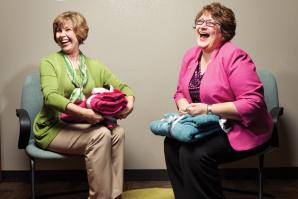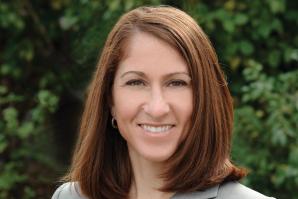Earlier this year, most locals couldn’t help but overhear buzz about the launch of local eateries like The Red Rabbit and Pour House. Imagine that same tenor about contributing to local charities. That’s the goal of GiveLocalNow, a campaign launched in September 2011 aimed at boosting financial contributions to nonprofits in the Sacramento Region. Sexy as Red Rabbit’s absinthe-splashed basil cocktail? Maybe not. But while Sacramento is gaining traction in areas like gastropubs and hand-crafted libations, the region is lagging in charitable giving.
“There is, in fact, less giving here,” says Ruth Blank, CEO of the Sacramento Region Community Foundation. “Fewer give here, and when they give, they give less. The same 25 families get asked for money for every capital campaign or every major fund drive. You can only go to the well so many times.”
Blank helped head the team that formed the Greater Sacramento Generosity Project, an in-depth research venture seeking the truth about giving habits in the Sacramento Region — the combined counties of Sacramento, Yolo, Placer and El Dorado.
“There was a lot of thinking that giving for philanthropy is not as well developed in Sacramento as it is in other places,” she says. “We thought it would be helpful to test that hypothesis.”
The project, commissioned by Sacramento’s Nonprofit Resource Center, also enlisted help from the Center for Strategic Economic Research (CSER) and Sacramento State’s Institute for Social Research. During the info-gathering phase in 2010, CSER reviewed charitable giving on itemized 2006 tax returns while the institute conducted an extensive phone survey with 2,000 local households regarding their 2009 giving record.
“One of the things that we discovered is that we’re giving at a rate lower than the national average — not only in terms of the amount given but also the percentage of households that participate in charitable giving,” says Ryan Sharp, director of CSER. “In addition, we discovered that households in the region feel it’s important to give to local charitable organizations, but only a select share of those households actually do so.”
According to the Greater Sacramento Generosity Project survey, regional households give about $1,990 compared to the national average of $2,355. And though 91 percent of survey respondents say giving to local charities is very or somewhat important, only 62 percent of Sacramento Region households actually do — 4 percent less than the national average.
In addition, when comparing 2006 tax records, the Sacramento Region scored “fairly weak” relative to the nation, state and four “benchmark” regions — San Jose, Riverside, Kansas City and Minneapolis — chosen for geographic, demographic and economic attributes similar to Sacramento. Locals gave about 1.9 percent of their adjusted gross income, whereas the nation gave 2.1 percent, and the state and benchmark regions gave 2.2 percent.
“One of the most interesting things in that data is that the biggest gap in giving was in high-income homes,” Blank says.
Tax data shows households making $200,000 or more donate about 2.2 percent of their gross adjusted income to charitable causes compared to 2.7 percent statewide and 2.8 percent in benchmark regions. That’s about $11,000 versus $18,000. And though rich Sacramento households reportedly give more of their discretionary income than their middle-class counterparts, it’s not by much.
“If we can get to the national average, which would be 66 percent of all homes giving the average amount that the rest of the country gives, it would mean $250 million more a year to local nonprofits.”
Ruth Blank, CEO, Sacramento Region Community Foundation
The numbers point to a finding by The Chronicle of Philanthropy indicating that middle-class Americans shoulder much of charitable giving across the board. In fact, the Chronicle’s study, “How America Gives,” which examined 2008 tax returns, indicates that households with incomes between $50,000 and $75,000 donate about 45 percent more discretionary income than households making $100,000 or more. The research, which also ranked U.S. counties by percent of income donated, showed households in wealthier neighborhoods generally give less than households in more economically diverse neighborhoods.
For example, of the four counties in the Sacramento Region, El
Dorado has the highest median discretionary income at $62,085.
According to the Chronicle study, however, the county ranks
lowest in the region by percent of income given. Sacramento
County, with the lowest median discretionary income at $50,313,
contributes the most.
“It’s not that we should beat ourselves over the head with [these findings],” Blank says. “We should understand why, and make the change.”
The 2009 household survey indicates locals’ reasons for not giving more — or not giving at all — vary from philosophy about government’s role to trust in charitable organizations to affordability. The bulk of respondents say government should provide most of the funding for educational (74 percent), health and human services (69 percent) and environmental programs (62 percent). About half of respondents cited uncertainty about what charities do with their gifts, and 75 percent say they think some charities have high administrative costs. More than 70 percent of survey respondents cited their financial situation as a major factor in their contribution decisions, with more than half citing that they already support too many charities or give to their church.
In light of the recession, Dr. Ernest Cowles, director of the Institute for Social Research and a Sac State sociology professor, also mentioned that locals may substitute financial contributions for volunteerism, the type of giving that doesn’t necessarily come with a price tag.
“I think in this region we see a lot of in-kind donations — people working in homeless kitchens, doing food drives, donating time to clean up parks and things like that,” Cowles says. “That wasn’t included in the survey, and I think that’s a big part of charitable giving. But it’s too hard to put a cash equivalent on somebody that goes every Saturday morning to volunteer at Loaves and Fishes.”
Regardless of why locals restrain contributions, the 3,400 regional nonprofits are suffering because of it. In benchmark regions, for example, nonprofits operate 6 percent of jobs in the private sector, while Sacramento nonprofits operate 4 percent. Local nonprofits also employ an average of 12 people, while similar cities employ 19. And in this region, organizations bring in $2.4 million in cumulative annual revenue compared to $3.7 million elsewhere.
Blank says trends found in these research reports cannot sustain a strong, local, charitable presence. So out of these findings came the GiveLocalNow movement to motivate increased regional giving.
“If we can get to the national average — which would be 66 percent of all homes giving the average amount that the rest of the country gives — it would mean $250 million more a year to local nonprofits,” she says. “All we need to do is improve a little bit, and it will make a huge difference.”
Findings in the Generosity Project indicate that about 70 percent of Sacramento Region contributors donate for the purpose of giving back and directly helping their community, so the movement aims to achieve the boost, especially among high-income groups, by highlighting the personal and social benefits of giving.
“I think a lot of [motivational factors] have to do with exposure and really understanding how so many of the important things we count on are made possible by nonprofits: wonderful nature experiences, children’s experiences, art, helping homeless people,” Blank says.
Local charitable organizations supported by GiveLocalNow include WEAVE Inc., Sacramento Children’s Home, St. John’s Shelter Program for Women and Children, and KVIE. Any qualified nonprofit can also join the network as a partner.
“I can’t really think of any nonprofit that couldn’t benefit [from increased contributions],” Blank says.
Recommended For You

Expanding a Vision
New leadership means fresh ideas for Women in Philanthropy
Banning together 12 years ago, a group of local women sought out to help foster youth establish healthy lives after emancipation.

New Money
The Capital Region’s next generation of philanthropists
In a region that can boast names like Teichert, Friedman and Tsakopoulos, some citizens think the call to give charitably rests outside their circle of responsibility. Not so for Sacramento’s newest philanthropists.


